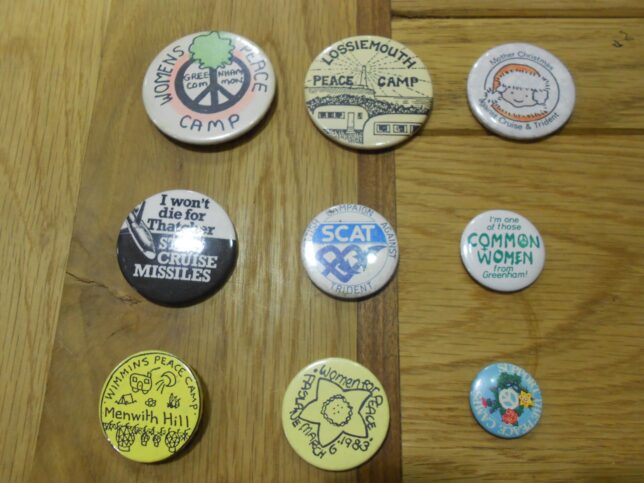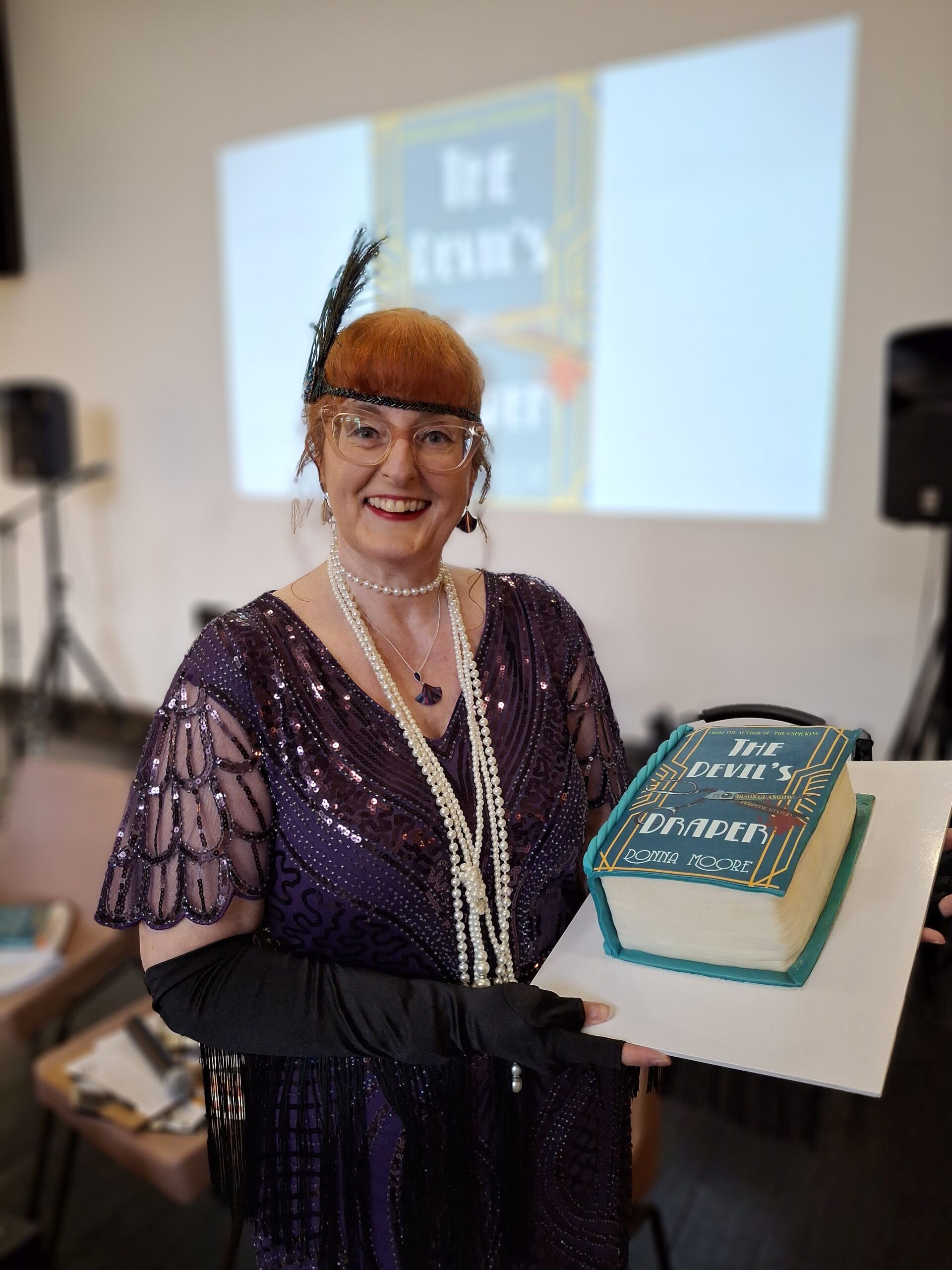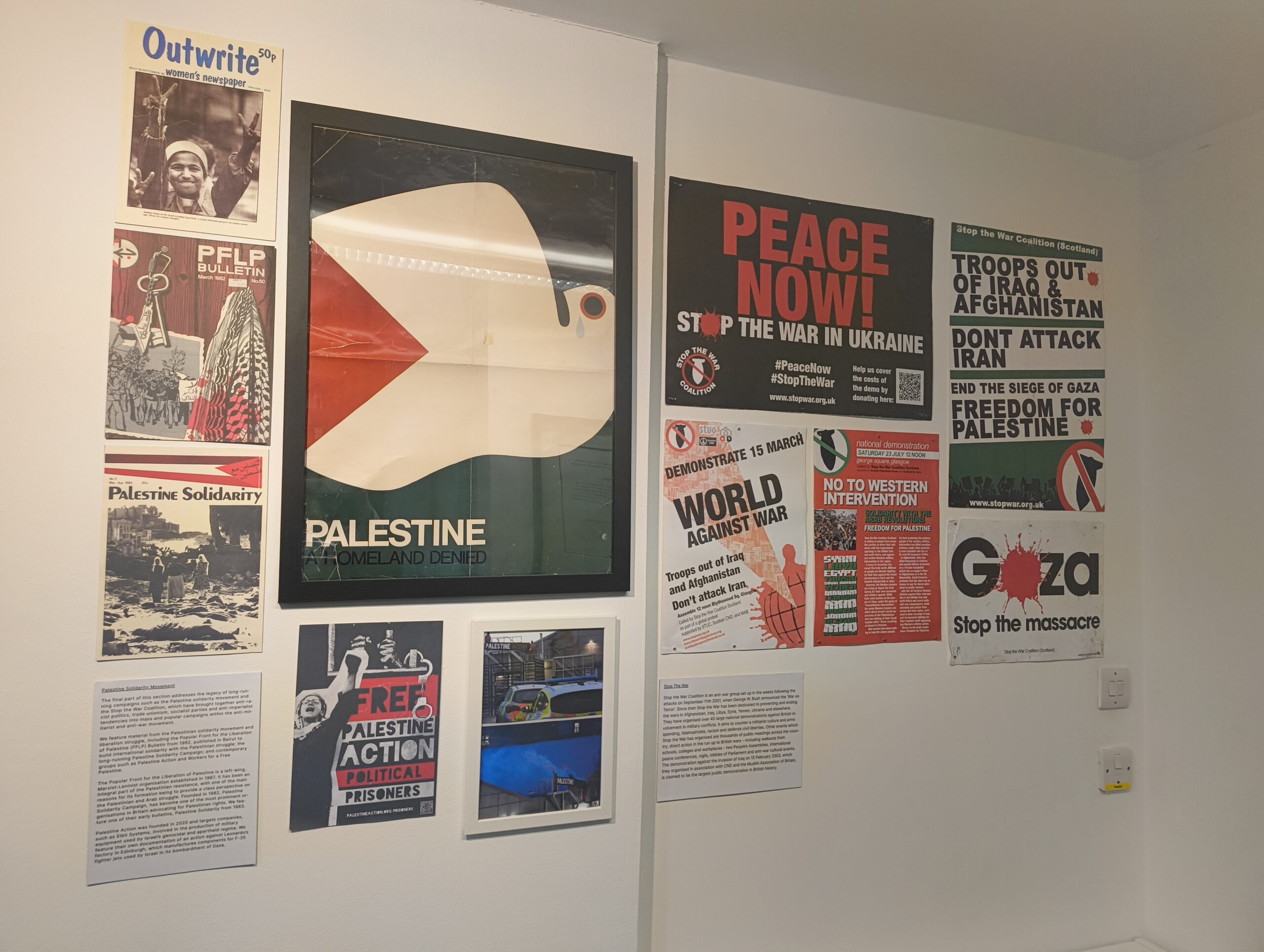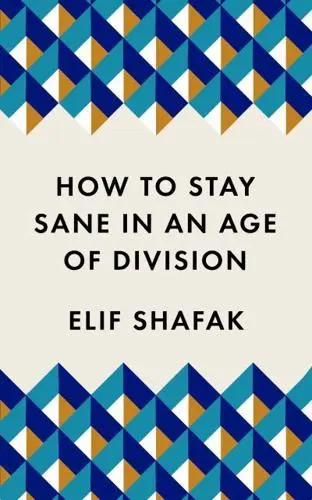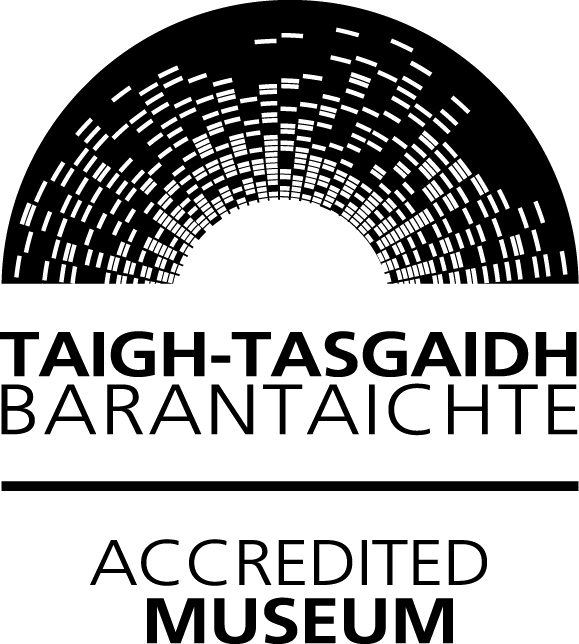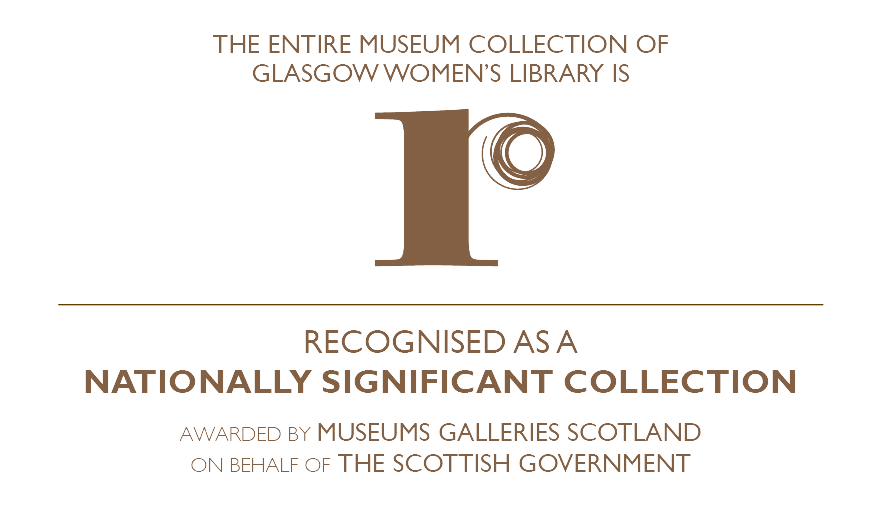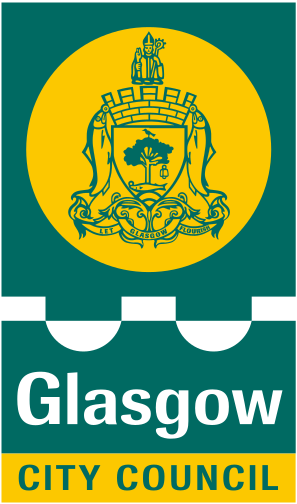September 21st is International Peace Day and to celebrate this, I have been looking at the badges in the archive section. These badges represent the Women’s Peace Camp at Greenham Common in Newbury, Berkshire. Greenham Common is famous for being the place where Women protested against the decision to site 96 Cruise nuclear missiles there, their protesting lasted for 19 years, beginning in 1981 and ending in 2000. When the camp closed in 2000, the site made way for the Commemorative and Historic Site. During those 19 years the camp seen many things happening like the presence of the women who had chosen to live in the camp for 24 hours a day; the camp began in September 1981 after a Welsh group ‘Women for life on Earth’ arrived to protest about the nuclear missiles being kept there and on December 12th 1982, 30,000 women held hands around the perimeter of the base, which was 6 miles in length this became known as the ‘Embrace the Base’ event.
The women were evicted from the camp by Newbury District Council on 29th September 1982 but soon set up camp nearby within days of the eviction. The camp became well known again when, on April 1st 1983, 70,000 women formed a human chain of 14 miles long going from Greenham to Aldermaston and the ordnance factory in Burghfield. In December 1983 another chain of 50,000 women circled the fence but this time sections of it were cut and hundreds were arrested. Another eviction took place on the 4th April 1984 but again, by nightfall, they had returned to reform the camp. The historic and Commemorative site contains a simple garden for Helen Thomas a young Welsh women who was killed by a West Midlands horsebox which had driven to close to her as she stood on the safe zone waiting to cross the road, Helen Thomas’s name is the only one within the site. The sites landscaping includes plants such as, Snowdrops, Snowflakes, Autumn Crocus, Wild Daffodils and Lily of the Valley. The design of the site is that the site itself represents the four elements of Earth, Fire, Water and Air, a circle of seven standing stones which have come from Wales, circle around the Flame sculpture (which symbolises the campfire) there is also a steel spiral sculpture, which represents the continuous reaching out work done at the women’s peace camp against nuclear weapons.
The spiral has the words ‘Women’s Peace Camp 1981-2000’ and the slogan ‘You can’t kill the spirit’ written into it. The Historic and Commemorative Site was inaugurated on the 5th October 2002. The Greenham Common Women’s Peace Camp consisted of nine smaller camps, the first of these was called Yellow Gate and the others included Blue Gate with its new age focus, Violet Gate with its religious focus and Green Gate which was exclusively for Women and did not allow male visitors. The last missiles left the camp in 1991 as a result of the Intermediate- Range Nuclear Forces Treaty although the camp remained until 2000 as the protestors won the right to house a memorial; after the missiles had been removed the camp was continued as part of the protest against the forthcoming UK trident programme. The last four protesters to leave the site included Sarah Hipperson, who had been part of the protests for the full 19 years. Sarah went on to write a book titled ‘Greenham: Non-violent women v the crown prerogative’ which tells the story of how the women of Yellow Gate peace camp at Greenham Common took on the law and won, on some instances, the last chapter tells the story of the Commemorative and Historic Site which was a garden of peace where once the women of Yellow Gate camp lived and confronted the missiles.
